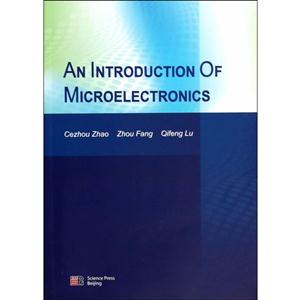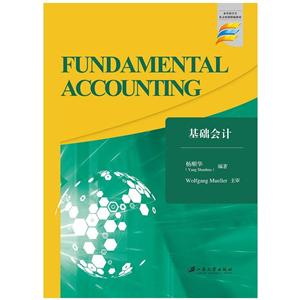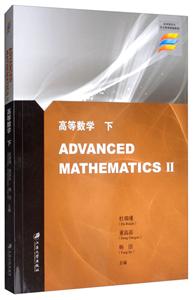
作者:陈山
页数:202
出版社:江苏大学出版社
出版日期:2017
ISBN:9787568408578
电子书格式:pdf/epub/txt
内容简介
本书为“电工学”的英文版教材,从海外学生特点和基础出发阐述理论和应用,内容包括网络分析的基本定律和定理,优选的技术,瞬态电路,正弦稳态分析,变压器和电动机等,案例和理论讲述结合,尽量浅显易懂地讲述相关理论内容,配合每章很后的小结和习题加强学生知识巩固。本书适用面广,可作为普通本科院校等理工科非电类英文专业教材。
本书特色
本书为“电工学”的英文版教材,从海外学生特点和基础出发阐述理论和应用,内容包括网络分析的基本定律和定理,先进的技术,瞬态电路,正弦稳态分析,变压器和电动机等,案例和理论讲述结合,尽量浅显易懂地讲述相关理论内容,配合每章最后的小结和习题加强学生知识巩固。本书适用面广,可作为普通本科院校等理工科非电类英文专业教材。
目录
CHAPTER 1 CIRCUIT ELEMENTS
Introduction
1.1 Voltage and current
1.2 Power and energy
1.3 Voltage and current sources
1.4 Electrical resistance (Ohm’s law)
1.5 Kirchhoff’s law
Summary
Problems
CHAPTER 2 SIMPLE RESISTIVE CIRCUITS
Introduction
2.1 Resistors in series and parallel
2.2 The voltage-divider and current-divider
circuits
2.3 Voltage division and current division
2.4 Measuring voltage and current
2.5 Measuring resistance–the Wheatstone
bridge
Summary
Problems
CHAPTER 3 TECHNIQUES OF CIRCUIT ANALYSIS
Introduction
3.1 Terminology
3.2 Node-voltage method
O 3.3 Mesh-current method
3.4 Node-voltage method versus Mesh-current
method
3.5 Source transformation
3.6 Thevenin and Norton theorem
3.7 Maximum power transfer
3,8 Superposition
3.9 Simulating analysis of Thevenin’s theorem
using Multisim
Summary
Problems
CHAPTER 4 RESPONSE OF FIRST-ORDER RL AND RC
CIRCUITS
Introduction
4.1 The inductor
4.2 The capacitor
O 4.3 The natural response of an RC circuit
4.4 The natural response of an RL circuit
O 4.5 The step response of an RC circuit
4.6 The step response of an RL circuit
4.7 A general solution for step and natural
responses
4.8 Simulation of transient circuit using
Multisim
Summary
Problems
CHAPTER 5 SINUSOIDAL STEADY-STATE ANALYSISIll
Introduction
5.1 Sinusoidal currents and voltages
5.2 Phasors
5.3 Complex impedances
5.4 Combinations of complex impedances
5.5 Circuits analysis with phasors and complex
impedances
5.6 Simulate the sinusoidal response for RLC
circuits using Multisim
Summary
Problems
CHAPTER 6 AC POWER
Introduction
6.1 Instantaneous power
6.2 Average power
6.3 AC Power Notation
6.4 Power factor
6.5 Reactive power
6.6 Complex power
6.7 Units
6.8 Power-factor correction
Summary
Problems
CHAPTER 7 BANLANCED THREE-PHASE CIRCUITS
Introduction
7.1 Balanced three-phase source
7.2 Load impedances in three-phase circuits
7.3 Three-phase power
Summary
Problems
CHAPTER 8 TRANSFORMERS
Introduction
8.1 The basic concept of magnetic field and the law
of magnetic circuit
8.2 Magnetic materials
8.3 Transformers
Summary
Problems
CHAPTER 9 AC MACHINES
Introduction
9.1 Basic classification of electric machines
9.2 Basic construction
9.3 Basic operation of electric machines
9.4 Performance characteristics of electric machines
9.5 The induction motor
Summary
Problems
Introduction
1.1 Voltage and current
1.2 Power and energy
1.3 Voltage and current sources
1.4 Electrical resistance (Ohm’s law)
1.5 Kirchhoff’s law
Summary
Problems
CHAPTER 2 SIMPLE RESISTIVE CIRCUITS
Introduction
2.1 Resistors in series and parallel
2.2 The voltage-divider and current-divider
circuits
2.3 Voltage division and current division
2.4 Measuring voltage and current
2.5 Measuring resistance–the Wheatstone
bridge
Summary
Problems
CHAPTER 3 TECHNIQUES OF CIRCUIT ANALYSIS
Introduction
3.1 Terminology
3.2 Node-voltage method
O 3.3 Mesh-current method
3.4 Node-voltage method versus Mesh-current
method
3.5 Source transformation
3.6 Thevenin and Norton theorem
3.7 Maximum power transfer
3,8 Superposition
3.9 Simulating analysis of Thevenin’s theorem
using Multisim
Summary
Problems
CHAPTER 4 RESPONSE OF FIRST-ORDER RL AND RC
CIRCUITS
Introduction
4.1 The inductor
4.2 The capacitor
O 4.3 The natural response of an RC circuit
4.4 The natural response of an RL circuit
O 4.5 The step response of an RC circuit
4.6 The step response of an RL circuit
4.7 A general solution for step and natural
responses
4.8 Simulation of transient circuit using
Multisim
Summary
Problems
CHAPTER 5 SINUSOIDAL STEADY-STATE ANALYSISIll
Introduction
5.1 Sinusoidal currents and voltages
5.2 Phasors
5.3 Complex impedances
5.4 Combinations of complex impedances
5.5 Circuits analysis with phasors and complex
impedances
5.6 Simulate the sinusoidal response for RLC
circuits using Multisim
Summary
Problems
CHAPTER 6 AC POWER
Introduction
6.1 Instantaneous power
6.2 Average power
6.3 AC Power Notation
6.4 Power factor
6.5 Reactive power
6.6 Complex power
6.7 Units
6.8 Power-factor correction
Summary
Problems
CHAPTER 7 BANLANCED THREE-PHASE CIRCUITS
Introduction
7.1 Balanced three-phase source
7.2 Load impedances in three-phase circuits
7.3 Three-phase power
Summary
Problems
CHAPTER 8 TRANSFORMERS
Introduction
8.1 The basic concept of magnetic field and the law
of magnetic circuit
8.2 Magnetic materials
8.3 Transformers
Summary
Problems
CHAPTER 9 AC MACHINES
Introduction
9.1 Basic classification of electric machines
9.2 Basic construction
9.3 Basic operation of electric machines
9.4 Performance characteristics of electric machines
9.5 The induction motor
Summary
Problems






![汽车轻量化用铝合金汽车板:理论与工艺:theory and technics [i.e. techniques]-技术教育社区](https://image12.bookschina.com/2020/20200726/1/B8256347.jpg)








